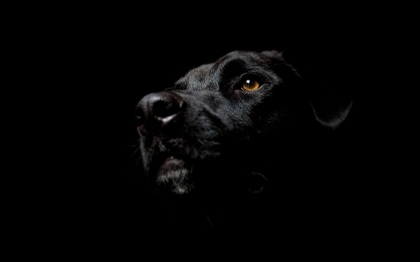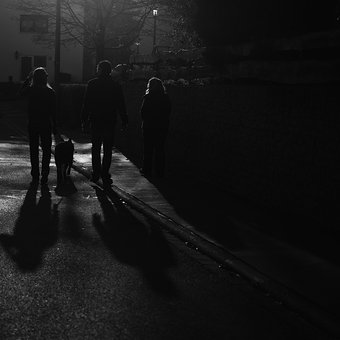Darkness DailyCelestialChallenge
While cats may reign as the pet world's champions of night vision, dog lovers can rejoice: Their beloved canines can also navigate in dim light, if not quite as skillfully as their feline companions. How can dogs get by when the lights go out, and on a 20/20 scale, can canines go eye-to-eye with humans?
Dogs' ability to see in darkness stems from the structure of their eyes. They have large pupils, which let in more light. Their retinas have a lot of light-and-motion-sensitive cells, called rods. These distinguish light from shadow. And most importantly, dogs' eyes, like those of cats, some birds and fish, and nocturnal predator animals, have a mirror-like membrane called a tapetum lucidum at the rear of the eye. The tapetum allows light that is not absorbed by the rods to rebound to the retina, letting it take in more light, which enables the dog to see better.
But do dogs see better than humans? The simple answer is that they see differently, and in some instances, better. Dogs see shades of gray, while a human's world is in living color. The human retina has more cone cells, which distinguish color, while dogs' retinas have more rods, which need much less illumination to detect the gray spectrum. In twilight or indoor semi-darkness, a dog can see more clearly than his human. The rods are also sensitive to motion, allowing dogs to detect smaller movements and to quickly sense a stranger, or their prey. This is helpful when hunting at night or on guard duty.
A professor of comparative ophthalmology at the University of Wisconsin-Madison estimates that a dog can see in light that is five times dimmer than what the human eye needs (cats need about one sixth of the light humans need to see in darkness.).
Because a dog's eyes are set in the front of his face, not on the sides of his head like a horse, he has good binocular vision, which lets him use both eyes simultaneously to see an object. But depending on the distance of that object, a dog may see a blurry outline rather than a bicycle or a barn, because a dog's ability to focus on detail is not as sharp as a human's. Canine vision is roughly estimated to be 20/75, which means that at 20 feet away, the dog will see something as clearly as a human would 75 feet away. Dogs devoted to "Lassie" reruns on TV most likely view the collie's filmed adventures as frame after frame of movement rather than as a series of scenes, because dogs see flickering light better than humans do.
A dog's eye view is also at a considerably lower vista than a human's. Whether seen from a Chihuahua's pint-size height or a Great Dane's perspective, the world looks different, and much closer to the ground, for canines.

Like cats, dogs have those eerie glow-in-the-dark eyes that seem to float like independent flashlight beams, bringing smiles to even reluctant nighttime dog-walkers. The phenomenon is known as eyeshine. It happens when unabsorbed light reflects off the eye's tapetum lucidum, that layer of mirror-like membrane, just the way light bounces back from a mirror. Next time you're walking Fido on a frosty evening, instead of grumbling, "Just go, already!" take a moment to marvel at the greeny-gold orbs shining back at you from the end of the leash.

.jpg)